Homemade Beef Stock - A Culinary Treasure
Learning to make stocks and sauces can be one of the most rewarding cooking experiences you can have and homemade beef stock is perhaps one of the most beautiful stocks you will ever make, but only if it is made right. The flavor is so amazing that once you get used to it you will want to have it on hand all the time. Not only that but it forms the basis for so many sauces and dishes that you will get to a place where you can't live without it.
Traditionally, veal stock was the "go to" stock for many years in professional kitchens. However, the cost of veal bones along with the shift in attitude about the cruelty of keeping calves confined has led a lot of people to move from using veal bones to using beef bones, and, rightly so.
Note: If you have never made stock before, please read my page about stocks. It's important to understand the ratio of the ingredients to get the right flavor.
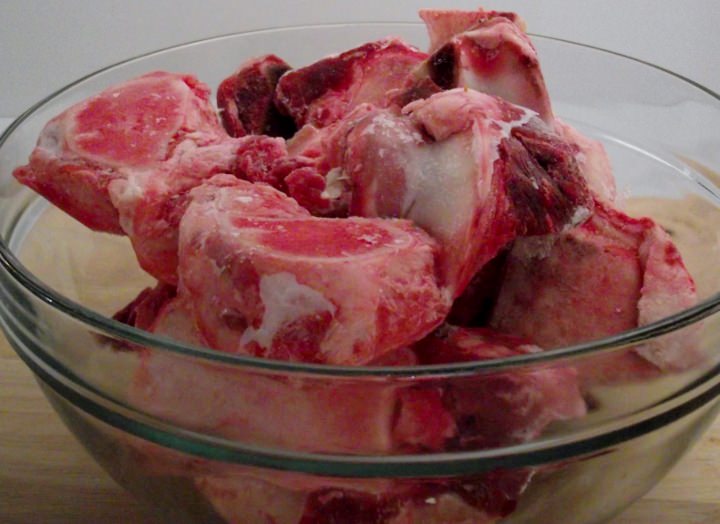
Bones for stock, Yummy.
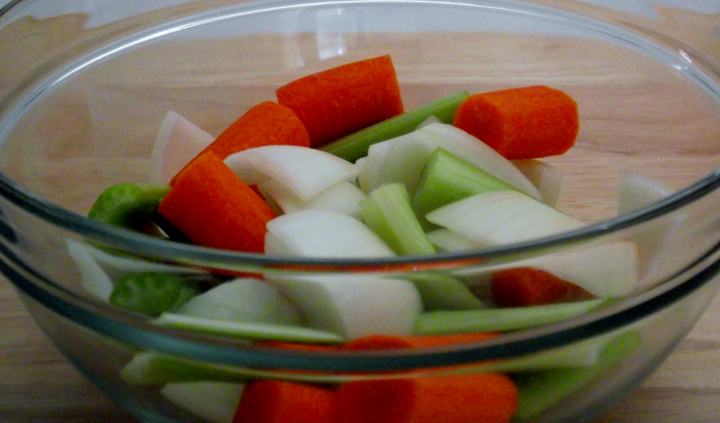
Mirepoix for stock. Celery, Carrot and onion.
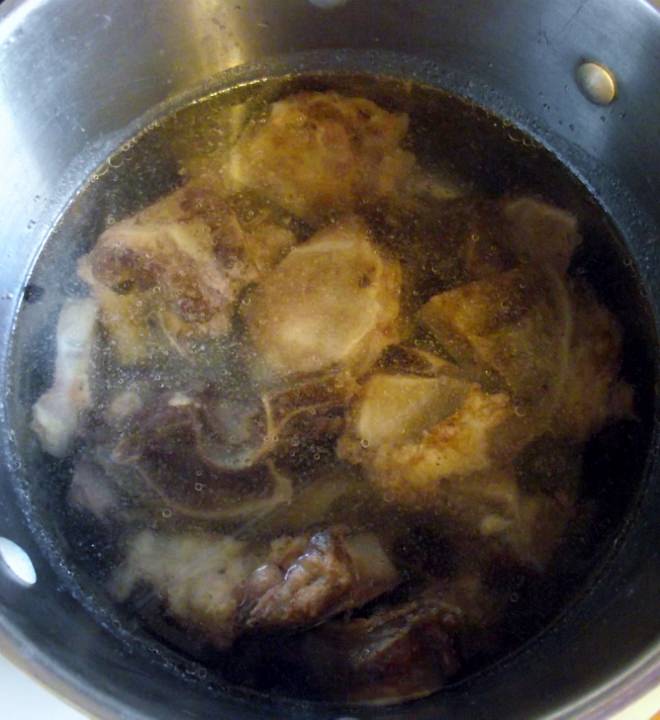
Blanching the bones. Bring the water to a boil, Add the bones, return to a boil and cook for 2 to 3 minutes. Drain, discarding the water.
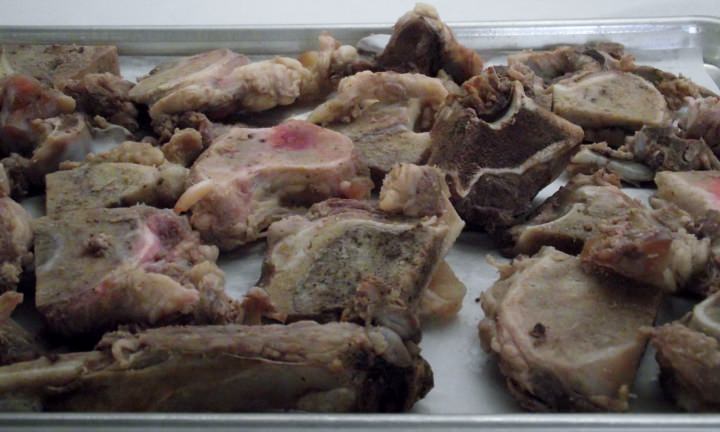
The bones have been rinsed, blanched, and rinsed again. They are ready to roast.
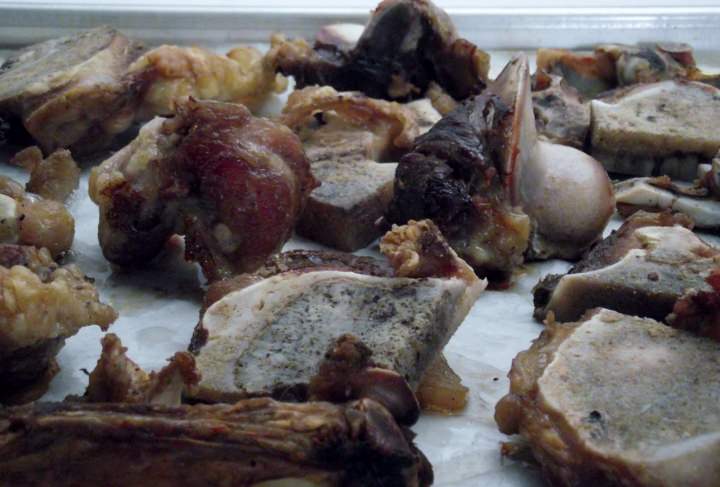
The bones were roasted for about 45 minutes at 350° F. (175° C)
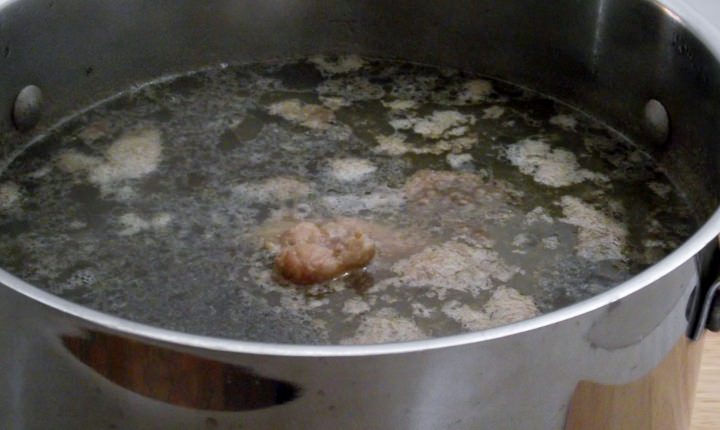
Transfer the bones to a stock pot and add just enough water to cover. Put the pot on a burner set to medium low heat. It is important to let stock come up to temperature slowly and cook slowly, so that you don't get too many impurities in the stock.
About 2 hours before the stock is done, add the mirepoix.
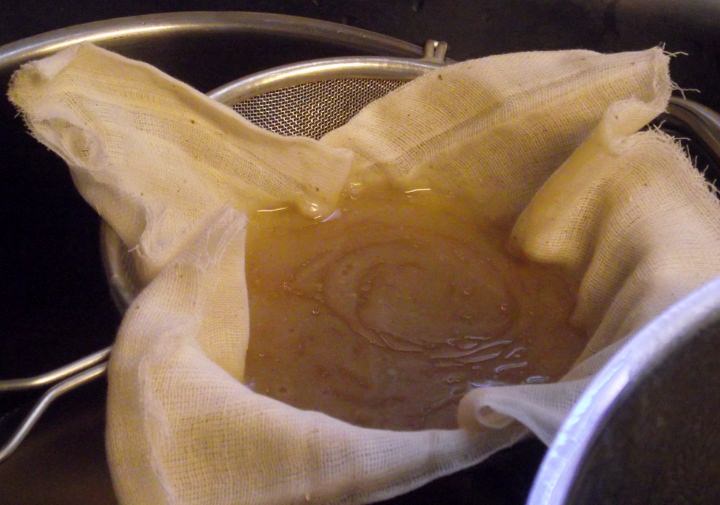
Once the stock finishes cooking, strain it through a fine mesh strainer lined with cheesecloth.
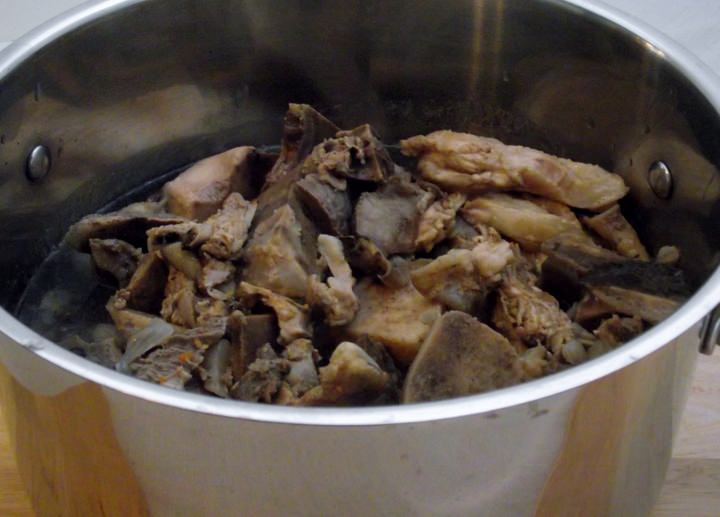
To make remouillage transfer the cooked bones into a clean stock pot and add enough water to just cover the bones. Put the pot on a burner set to medium low heat. Again, it is important to let stock, or remi, come up to temperature slowly and cook slowly, so that you don't get too many impurities in the stock.
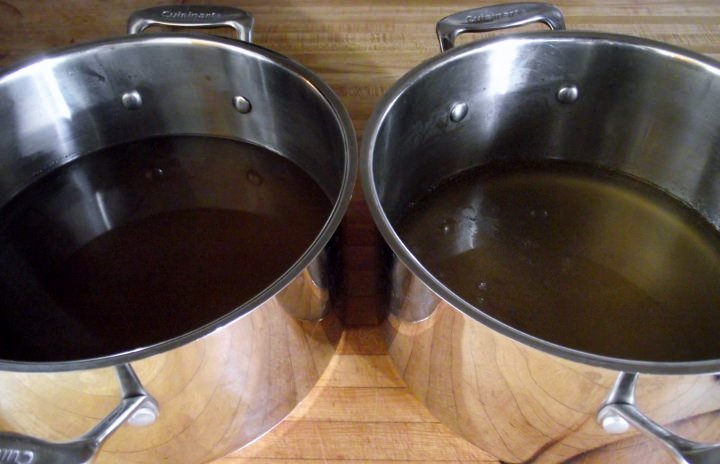
This is a side by side shot so that you can see the difference between the stock and the remouillage.
The stock is on the left and the remi is on the right. Notice that the original stock is so much darker in color.
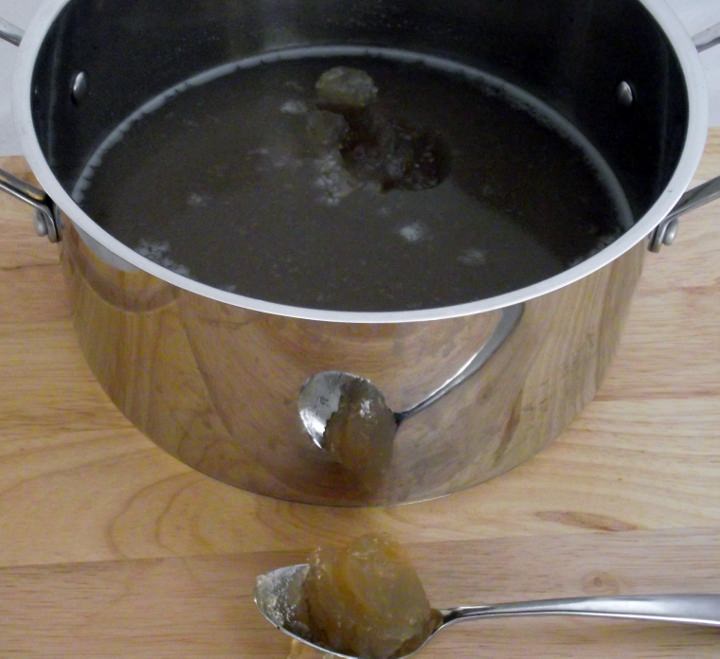 Homemade Beef Stock
Homemade Beef StockThe finished product. The stock and remi have been combined, reduced and strained. After chilling you can really see the gelatin. That's what you want.
Homemade Beef Stock
- Yield: Varies, about 12 cups / 2.8 liters
- Prep Time: 30 minutes
- Cook Time: 12 to 24 hours
- Engaged Time: 2 hours
Equipment
- 12 quart stock pot
- Fine mesh strainer or chinois
- Cheesecloth
- Deep Fry Thermometer (optional)
Ingredients
- 5 pounds / 2265 grams meaty beef bones, cut horizontally across the bone
- 8 ounces / 225 grams onion medium dice
- 4 ounces / 110 grams carrot peeled medium dice
- 4 ounces / 110 grams celery medium dice no leaves
- 15 sprigs fresh thyme
- 5 bay leaves
- 2 teaspoon / 6 grams whole peppercorns
- 20 parsley stems
Method
- Preheat oven to 375° F / 190° C.
- Fill a 12-quart stock pot with enough water to just cover the bones. Bring the water to a rapid boil. Off the heat, add all of the bones. Return it to a boil and let the bones boil off for 2 to 3 minutes.
- Remove from heat and strain through a colander, discarding the water. Rinse the bones under running water. Wash the pot, and proceed. This step removes much of the impurities. (Optionally, if you have the time you can do a second blanching. Just repeat the above steps.)
- Arrange the bones, in a single layer, on a parchment lined sheet pan and place the pan in the oven. Reduce the heat to 350° F / 175° C. Roast until the bones are nicely caramelized, about 45 minutes to an hour.
- Remove the pan from the oven and transfer the bones to the stock pot.
- Next, add enough water to just cover the bones. Add the thyme, bay leaves, peppercorns, and parsley stems. When the stock just begins to bubble reduce the heat to low. Ideally, you want a bubble to break the surface of the stock about every 3 to 5 seconds. That is it. Let it simmer on low for about 8 to 12 hours, depending on the size of the bones.
- Skim the scum from the stock with a spoon or fine mesh strainer every 10 to 15 minutes for the first hour of cooking and twice each hour thereafter. If the water level drops after skimming, you can add more water.
- About 2 hours before the stock is finished, add the onion, carrot, and celery to the pot. You may need to add some water. (Why 2 hours if veg stock only takes an hour? Well, the heat is very low and when you add the mirepoix it is going to drop the temperature. It will take between 20 and 30 minutes to raise back up. When I added my mirepoix the temperature dropped 40 degrees.)
- Once the beef stock is finished remove the bones and set aside. Ladle off as much of the liquid as you can and pass it through a very fine mesh strainer. If you really want to clean it up rinse the strainer, line it with cheesecloth, then pass the liquid through a second time. When you strain the stock, strain it into a second stockpot that is resting in an ice bath.
- Place the stockpot in an empty sink and fill the sink up around the pot with ice. Once the liquid is in the pot, add water to the ice. Stir the stock for about 20 minutes to cool it and store it in the refrigerator. (The reason you cool it this way is to get it through the danger zone, between 40 and 140° F / 4 to 60° C, as quickly as possible, thereby inhibiting bacterial growth.)
- Once it cools completely you should have a layer of fat that has formed over the top. Using a tablespoon remove the fat and discard it.
- When it comes time to strain the stock save the bones and you can make remouillage or remi for short. It is a lot easier than the original stock. If you are going to make remi don't freeze the stock yet. Keep it in the fridge until you finish the remi, because you are going to combine them.
- Since the bones are already cooked off you don’t get as much from them but you still get something. Just put the bones back into a stockpot, cover with water, and allow the remi to come to a bubble.
- Let this go another 8 to 12 hours. (Optionally, you can add more aromatic vegetables to the remi for a little more flavor.)
- When it's finished remove the bones and strain the remi through a fine mesh strainer lined with cheesecloth.
- Return the remi to a large saucepan set over low heat. Allow the remi to simmer until it is reduced by three quarters. Strain again, and combine with the stock. Once combined return the stock to a burner and let the stock reduce by one third.
- Strain one final time. Place the stockpot in an empty sink and fill the sink up around the pot with ice. Once the liquid is in the pot, add water to the ice. Stir the stock for about 20 minutes to cool it, then transfer the stock to smaller containers and freeze until you are ready to use it. When you are ready to use the stock, bring it to a boil for 2 to 3 minutes to kill any bacteria.
Notes
- You can make a white beef stock if you desire. The only difference is that you do not roast the bones. After blanching just move to making the stock.
- After you are finished with the bones, you can pick any meat, fat, and cartilage from them before you discard them. Your dogs will love you for it.
Tags: homemade beef stock, stocks and sauces




